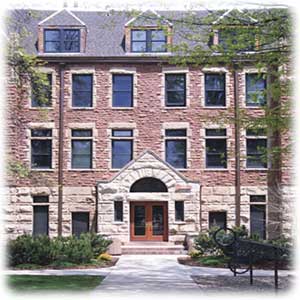Creating a Professional Learning Community: Cottonwood Creek School
Introduction
 Much of the current literature on school reform extols the importance of school staffs working collegially to increase successful results for students. In the previous Issues paper, "Professional Learning Communities: What Are They and Why Are They Important?" (Hord, 1997b), the defining characteristics of school staffs operating as a collaborative community of professional learners were described. In addition, and of obvious importance, the gains for staffs and students when staffs engage as communities of inquiry and improvement were articulated. Note that both terms - professional learning community, and community of continuous inquiry and improvement - are used interchangeably in this paper, as both terms are found in the literature.
Much of the current literature on school reform extols the importance of school staffs working collegially to increase successful results for students. In the previous Issues paper, "Professional Learning Communities: What Are They and Why Are They Important?" (Hord, 1997b), the defining characteristics of school staffs operating as a collaborative community of professional learners were described. In addition, and of obvious importance, the gains for staffs and students when staffs engage as communities of inquiry and improvement were articulated. Note that both terms - professional learning community, and community of continuous inquiry and improvement - are used interchangeably in this paper, as both terms are found in the literature.
Not included in the literature and the paper noted above, however, were strategies or approaches whereby school staffs might develop into such collegial organizations. Staff of the Strategies for Increasing School Success Program (SISS) at the Southwest Educational Development Laboratory (SEDL) have undertaken efforts to find, study, and report real-life examples of school staffs that have been transformed into these communities.
Several years ago an account of a school that re-invented itself, adopting a new, high-quality professional working form, was reported in an Issues paper, "Schools as Learning Communities" (Boyd & Hord, 1994). The discovery of this school spurred SEDL staff to undertake its current efforts to learn more through exploration of the literature (Hord, 1997a) and through studies of schools operating as "mature" communities of reflection and inquiry. Finding such schools has been a formidable task, for as Linda Darling-Hammond (1996) reports, and our experience supports, they are few and far between.
We have, however, been fortunate in our region to find and study several schools in which the staff operates in this way, and Cottonwood Creek School is one of them. The opportunity to study this school and its development into a learning community of professionals has been instructive. From this research study we have gleaned important information about strategies and factors that contribute to developing and transforming a school staff into a tightly functioning collegial unit. We thank the school staff for this vital opportunity to learn about creating structures that can significantly contribute to a school's effectiveness and subsequently to student results.
Next Page: Background

